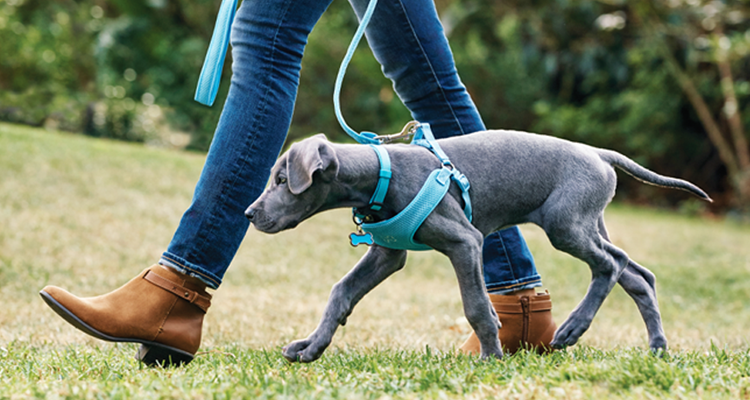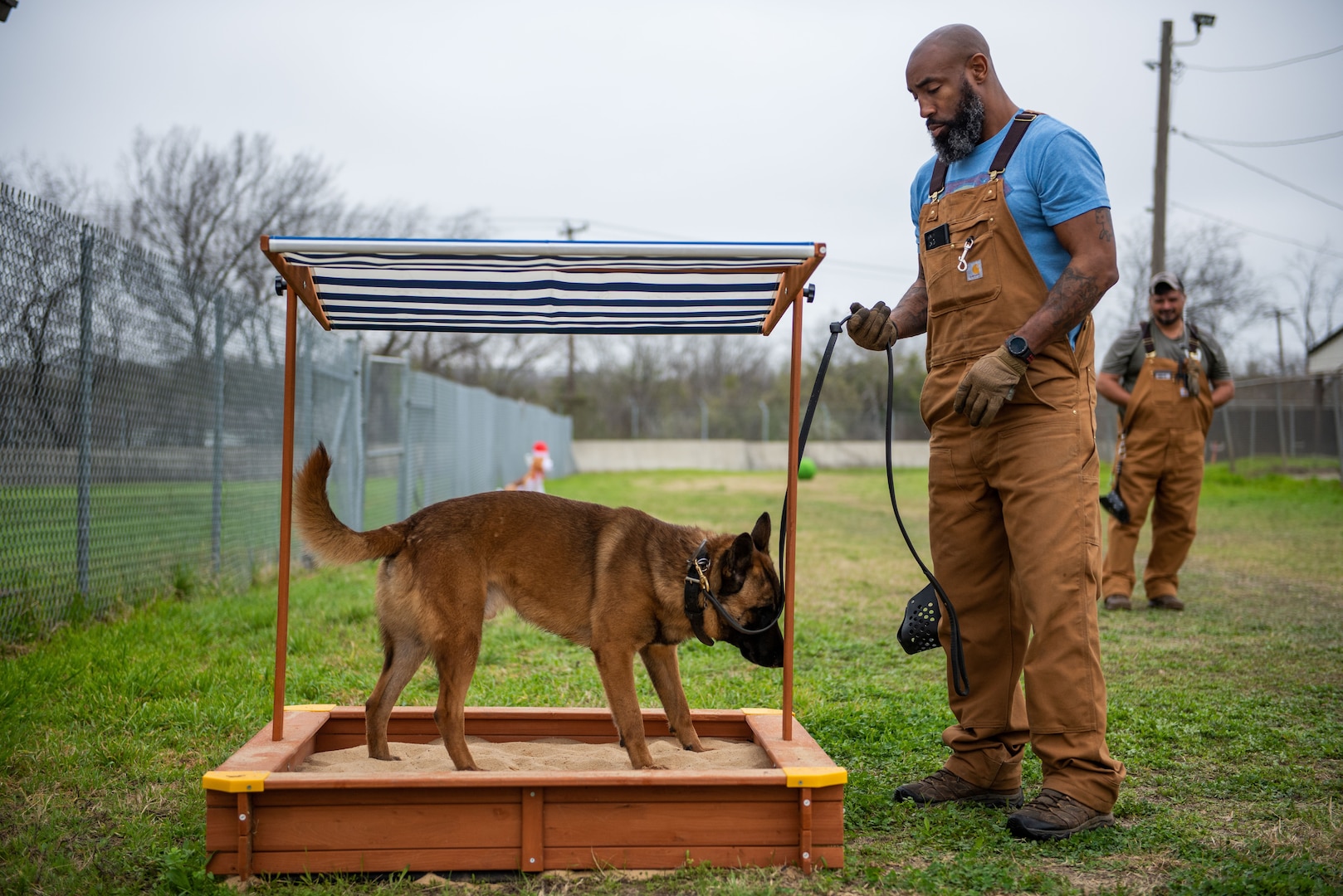Leading Canine Training Methods Every Owner Should Know

Favorable Reinforcement Methods
Using favorable support strategies is necessary for effective canine training, as it cultivates a trusting bond in between the trainer and the pet dog. This technique focuses on fulfilling desirable behaviors instead of punishing unfavorable ones, creating a setting helpful to finding out. Benefits can include deals with, appreciation, or playtime, which encourage pet dogs to duplicate the actions that earn them these rewards.

In addition, this method improves the pet dog's interest for training sessions. When canines connect training with favorable experiences, they are more engaged and responsive. Past instant therapy, favorable reinforcement urges a joint connection between the canine and instructor, reducing anxiety and concern
To make best use of effectiveness, it is vital to provide benefits quickly, making certain the dog links the behavior with the reinforcement. Fundamentally, favorable reinforcement methods not only produce better-trained canines however likewise promote an unified collaboration in between canine and proprietor.
Remote Control Training Approach
The clicker training approach is a very reliable technique that builds upon the concepts of favorable support by adding a distinct noise to mark preferred behaviors. This approach uses a little portable device that generates a clicking noise, enabling instructors to interact with their pets in a instant and clear manner. When a pet dog performs a behavior that the owner wishes to urge, the clicker is activated, followed by a benefit, generally in the kind of deals with or praise.
The secret to successful remote control training depends on consistency and timing. It is essential to click at the precise moment the preferred behavior occurs, making sure that the canine associates the noise with the action and the subsequent reward. This approach not only improves interaction but likewise promotes a stronger bond between the dog and the proprietor, as it motivates engagement and communication during training sessions.
Remote control training can be put on a variety of commands and actions, from basic obedience to a lot more complex tricks. Its flexibility and efficiency make it a favored strategy among professional fitness instructors and animal proprietors alike, leading the way for a well-trained and responsive canine friend.
Leash Training Essentials
Effective leash training is crucial for guaranteeing a risk-free and pleasurable strolling experience for both dogs and their owners. A flat collar may function for some pet dogs, while others might benefit from a harness that decreases drawing.
Present your dog to the leash slowly, allowing them to explore it in a comfortable atmosphere. Practice loose-leash strolling once they are accustomed. This involves gratifying your dog for strolling beside you instead of drawing in advance. Usage deals with and appreciation to enhance preferred actions, and make sure to remain assertive and tranquil.
If your canine starts to draw, quit walking right away. Wait until they go back to your side prior to returning to. This educates them that pulling does not cause advance. Additionally, practice numerous strolling environments to assist your pet adjust to disturbances.
Routine method will certainly solidify your canine's understanding of chain etiquette. Keep in mind that chain training is a recurring process; perseverance and consistency will generate the best results, cultivating a favorable experience for both you and your canine friend.
Socialization Methods
Socialization is a critical aspect of canine training that ought to ideally begin throughout puppyhood yet can be advantageous at any type of age. Reliable socialization aids dogs create confidence and lowers the chance of behavior issues. To implement effective socialization techniques, subject your pet to a selection of settings, individuals, and various other pets.
Start with controlled settings, such as young puppy classes or organized playgroups, where young dogs can connect safely. Gradually present your dog to brand-new experiences, including different noises, surfaces, and tasks. Make sure these encounters are fulfilling and positive to develop a feeling of safety.
For grown-up dogs or those lacking exposure, begin with low-stress circumstances. Short, favorable interactions with tranquil dogs and pleasant human beings can produce favorable organizations. Use deals with and appreciation to reinforce desirable actions during these experiences.

Uniformity and Patience
Recognizing the relevance of consistency and patience in pet dog training is crucial for attaining lasting outcomes. Educating a dog is a progressive process that needs a structured approach and unwavering dedication from the owner. Each command or actions must be strengthened regularly to help the dog comprehend what is expected of them. Irregular training can cause confusion, making it challenging for the canine to understand commands or behaviors, inevitably impeding development.
Furthermore, patience is an essential component of efficient training. Pet dogs, like people, learn at their own pace. Some might understand ideas promptly, while others may take much longer. It is important for proprietors to remain supportive and tranquil, enhancing favorable actions without turning to irritation or punishment. This cultivates a relying on partnership in between the canine and owner, urging a more ready and passionate student.
To cultivate uniformity and patience, develop a routine training regular, make use of the same commands, and ensure that all member of the family use the exact same training concepts - Dog training. By doing so, you produce a secure setting for discovering, enabling your dog find this to establish and thrive into a mannerly buddy
Verdict
Finally, reliable pet training techniques, such as positive reinforcement, clicker training, and proper leash training, are crucial for fostering a healthy owner-dog relationship. Additionally, applying socialization strategies and maintaining uniformity and persistence throughout the training procedure contributes substantially to a canine's general wellness. By incorporating these approaches, pet owners can promote the development of well-adjusted, obedient pet dogs, ultimately boosting the top quality of life for both the dog and the owner.
Among the most popular methods are favorable support, clicker training, and chain training, each offering distinct advantages that contribute to a well-behaved dog. As we discover these basic techniques, it becomes noticeable that mastering their page nuances can considerably influence the training experience and the canine's total actions.Utilizing favorable support techniques is vital for efficient dog training, as it fosters a trusting bond between the pet dog and the fitness instructor.In conclusion, reliable dog training techniques, such as favorable reinforcement, remote control training, and correct leash training, are vital for cultivating a healthy and balanced owner-dog relationship. By integrating these techniques, pet owners can assist in the advancement of well-adjusted, obedient family pets, inevitably improving the high quality of life for both the owner and the canine.